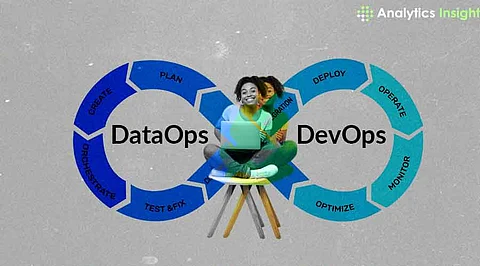

In today's data-driven world, the methodologies of DataOps and DevOps play pivotal roles in ensuring smooth, efficient workflows for both data and software. While they share foundational principles, each has a distinct focus, with DataOps honing in on data management and analytics, and DevOps streamlining software development and deployment. Below, we'll delve into the core differences between these methodologies and explore how businesses are utilizing them for different objectives.
At its core, DevOps is a methodology aimed at optimizing and accelerating software development through enhanced collaboration between development and operations teams. It emerged as a solution to traditional software development models that often-involved siloed teams and slower deployment cycles.
Collaboration: Development and operations teams work in tandem to improve speed and quality.
Automation: Continuous integration and deployment (CI/CD) automate repetitive tasks like testing, code integration, and application delivery.
Continuous Improvement: DevOps encourages constant feedback, refining the development process to meet end-user needs more efficiently.
Agility: Software updates and new features are rapidly deployed, ensuring that businesses can quickly adapt to market demands.
Some popular use cases for DevOps are in SaaS companies, such as Netflix and Google, which rely on this methodology to roll out frequent updates and features with minimal disruption to users.
DataOps, on the other hand, focuses on optimizing the entire lifecycle of data, from ingestion and transformation to analytics. It is an evolving set of practices aimed at improving the flow and accessibility of data across an organization, especially as data becomes larger and more complex.
Data Pipeline Automation: Similar to CI/CD in DevOps, DataOps automates data acquisition, transformation, and delivery, minimizing human errors and improving efficiency.
Data Quality and Governance: DataOps ensures that the data used for analytics is accurate, well-managed, and secure. It employs processes to track data lineage and maintain data quality across its lifecycle.
Collaboration: Just as DevOps encourages teamwork between development and operations, DataOps fosters collaboration between data engineers, data scientists, analysts, and business users to extract meaningful insights from data.
Companies like Uber and Netflix are notable examples of organizations leveraging DataOps to handle massive volumes of data efficiently. Netflix, for instance, uses DataOps to track user preferences and deliver personalized recommendations, thus enhancing customer experiences.
Despite their similar goals, streamlining workflow ability and efficiency-improving capability—DataOps and DevOps have different areas of focus:
1. Purpose:
DevOps: Focuses on streamlining software development, from writing code to deploying applications. The objective is faster and more reliable software delivery.
DataOps: Concentrates on managing and analyzing data to provide business insights, making it especially relevant for data-heavy industries such as finance and healthcare.
2. Pipeline Focus:
DevOps Pipeline: Centers on code development, continuous integration, and continuous deployment (CI/CD). Once the code is written and tested, it moves seamlessly through stages until deployment.
DataOps Pipeline: Deals with collecting, transforming, validating, and analyzing data. Each step in the pipeline is designed to ensure high-quality data for business decision making.
3. Collaboration:
DevOps: Collaboration occurs between development and operations teams, with a strong emphasis on merging business requirements with operational efficiency.
DataOps: Involves a wider range of stakeholders, including data engineers, analysts, and business users, all working to ensure the flow of accurate, well-governed data.
4. Automation:
DevOps: Automates tasks related to software building, testing, and deployment.
DataOps: Automates data workflows, ensuring data governance, validation, and integration from various sources
5. Feedback Loops:
DevOps: Feedback loops are introduced during the development process, allowing teams to operate on software quickly.
DataOps: Feedback is continuous and real-time, helping to ensure data integrity and that insights are based on reliable information.
The decision between DataOps and DevOps depends largely on your organization’s primary challenges and goals.
1. DevOps is ideal for companies looking to speed up software development cycles. It is particularly useful for organizations focused on continuous delivery and high customer engagement, like those in e-commerce or technology.
For example, companies like Amazon and Google deploy software updates regularly, relying on DevOps methodologies to deliver new features rapidly without compromising system stability.
2. DataOps, on the other hand, is better suited for organizations handling large volumes of data and needing accurate insights into decision-making. It’s especially important in sectors like finance, healthcare, and retail, where data accuracy, compliance, and governance are critical.
For example, financial institutions use DataOps to improve their risk management processes by providing real-time data analytics and insights.
While both DataOps and DevOps are essential for streamlining modern business processes, they serve different purposes. DevOps helps accelerate software development and deployment, while DataOps ensures that data pipelines run smoothly, delivering high-quality data for analysis. Organizations need to evaluate their priorities—whether it's speeding up software delivery or improving data quality—to decide which methodology is best suited for their needs. In many cases, the two can complement each other, allowing businesses to harness both software and data to drive innovation.
